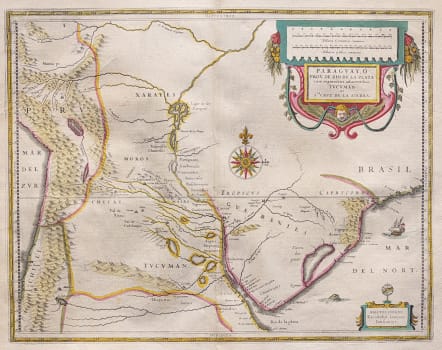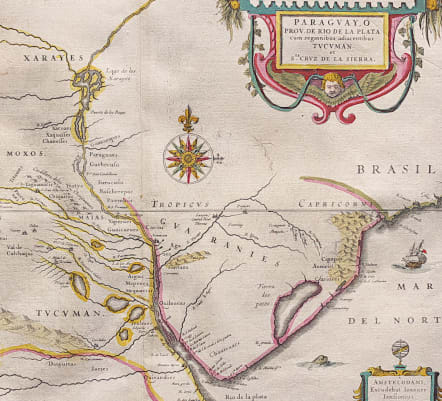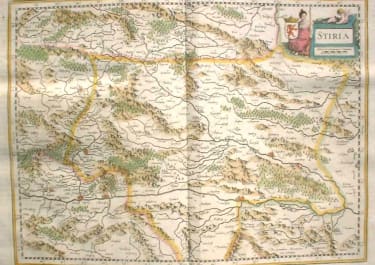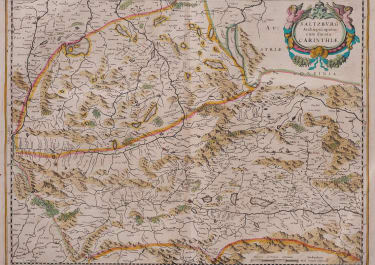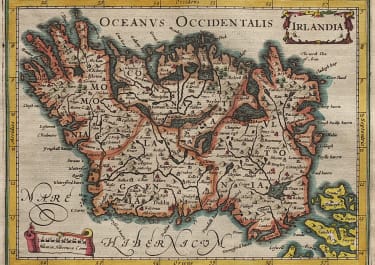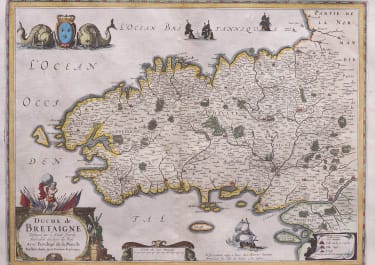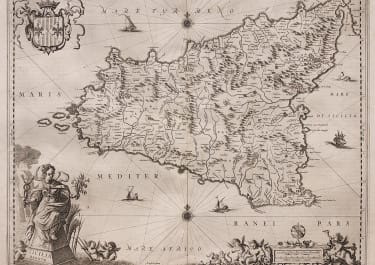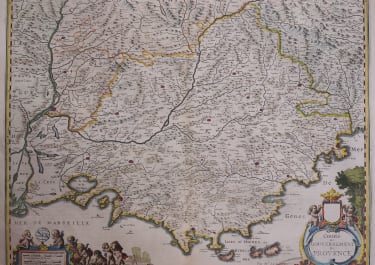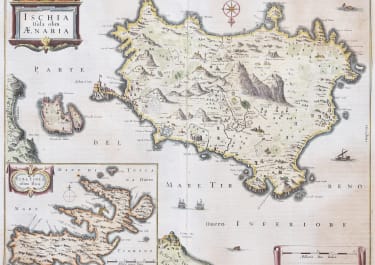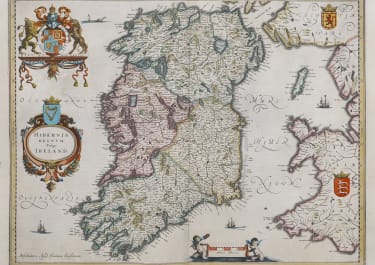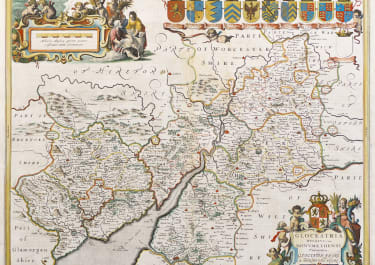PARAGUAY, O PROV. DE RIO DE LA PLATA
Sold
Full Title: Paraguay, O Prov. de Rio de la Plata cum regionibus adiacentibus Tucuman et Sta Cruz De La Sierra..
Attractive map map of the region including the Paraguay River basin and the Peru-Chilean coast with Lake Titicaca. The Rio de la Plata is boldly shown with many large islands in the broad river. Several towns are named including Rio de Janeiro, San Paulo, Buenos Ayres, Medoca, Arica, Potosi and Cusco. The map is identical to Blaeu's map of the same title with a large decorative title cartouche incorporating the distance scales, smaller cartouche with armillary sphere, a large compass rose, sea monster, and here Jansson has added a sailing ship off the coast of Brazil. Latin text on verso.
Very good original colour
Very good Condition.
code : M3626
Cartographer : JANSSONIUS Johannes Jansson
Date : 1638 Amsterdam
Size : 38 x 48.5 cms
availability : Sold
Price : Sold
Johannes Janssonius Jr. (1588-1664) was the son of the bookseller and publisher, Johannes Janssonius of Arnhem (ie. Janssonius, the elder). The elder Janssonius of Arnhem acted as co-publisher, with Cornelis Claesz, of the early editions of Hondius' "Atlas Minor".
Janssonius Jr. married Jodocus Hondius' daughter Elisabeth in 1612. From about 1633 onwards Janssonius' name and imprint started appearing on the Mercator/Hondius "Atlas ..." After 1636 the name of the "Atlas ..." was changed to "Atlas Novus "with Janssonius being responsible, in the main, for its publication.
The "Atlas Novus" was expanded by Janssonius over the years of its publication in an attempt to rival Blaeu's "Atlas Maior" for size and quality. Janssonius' "Atlas Novus" eventually comprised six volumes with a nautical atlas and an atlas of the ancient world included. The maps were relatively similar format to those of Blaeu, although a difference in style is certainly discernible.
Janssonius also issued an "Atlas Maior" of his own, again in competition with Blaeu, but this was not issued as regularly as the Blaeu version. The "Atlas Maior" comprised some ten volumes - eleven if the Cellarius celestial volume is included.

